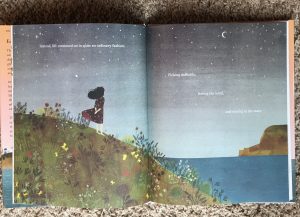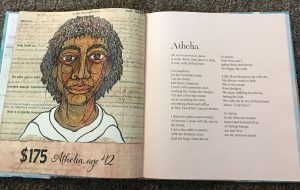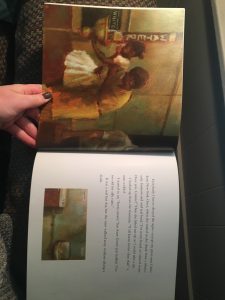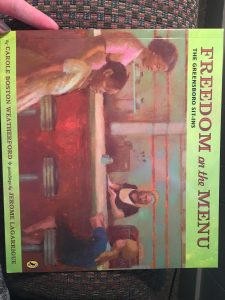
Title: As Fast As Words Could Fly
Author: Pamela M. Tuck
Illustrator: Eric Velasquez
Publisher and Year: Lee & Low Books Inc. 2013
Number of pages: 32
Tags/Themes: Award Book, Diversity, Family, Historical Fiction, 6-8, Evan White
Genre: Historical fiction; Children’s; Cultural; Picture Books; Historical
Descriptive Annotation: Mason is a young black boy during the civil rights movement era. He types letters for his father to be sent to Congress to fight against inequality. One day, Mason’s father told him the school bus was going to pick him up to bring him to a closer school. Mason was scared since all the students were white in the new school. The bus purposely didn’t pick up Mason the first two days, but eventually he got to school. No one spoke to Mason or helped him. Mason still did very well at school and eventually got a job as a typist in the library. Masons father has to contact the Southern Christian Leadership Conference (SCLC) to fight with the Board of Education to make sure Mason could keep his job at the library. Soon Mason won his school’s competition to go into a typing contest across many schools. Many of the students were disgusted that Mason was representing their school. Mason ended up winning the competition, but no one applauded for him and he got no award. The book ends with his family being proud of him. The students need a lot of historical knowledge for this book. They need to know about the Southern Christian Leadership Conference, the Board of Education, and how integration in schools worked. They would also benefit from general knowledge of the civil rights era.
Classroom Application: This text can reinforce history. This story is based off of real events and can be a gateway into what life was like for black students during the civil rights era. The story has many historic references that could be expanded on like the SCLC and school integration. This book can be used to expand students’ thinking by thinking how black people achieved in many ways not initially thought of to advance in equality. Mason proved he had value and was capable of anything by showing his typing skills. The white teachers and students didn’t expect anything from him, but Mason proved them wrong. This stretches students to show there are many ways to fight against a system they don’t like and make change.
Linguistic and Cultural Diversity Analysis: This book represents the history of black culture and how Blacks were relentless during the civil rights movement. Mason showed courage and strength for doing all his work in a white school. This brings the black community closer to equality as each new change in society is a change for equality. The story also shows the culture during this time period, how White people treated Black people. The culture of schools is exposed to reject Black students. For instance, the book states, “When the boys arrived at Belvoir High, the principal, Mr. Bullock barricaded the doorway. He looked as if he had smelled a skunk” (15). Mr. Bullock absolutely didn’t want the boys to be educated in his school, but the boys still succeeded. Mason’s father also utilized the SCLS. “Mason had heard plenty of Pa’s stories about the Southern Christian Leadership Conference, the organization that coordinated nonviolent actions to end segregation” (21). This also shows the culture of how the black community seeks leadership in the church, as the church was their own institution to have control of, and a place for leadership. I might introduce this book by having the students brainstorm ways the civil rights movements made changes in society. From the list, we can talk about small victories are important for change to and read the story on Mason’s victory, showing there are many ways to win and create change.











